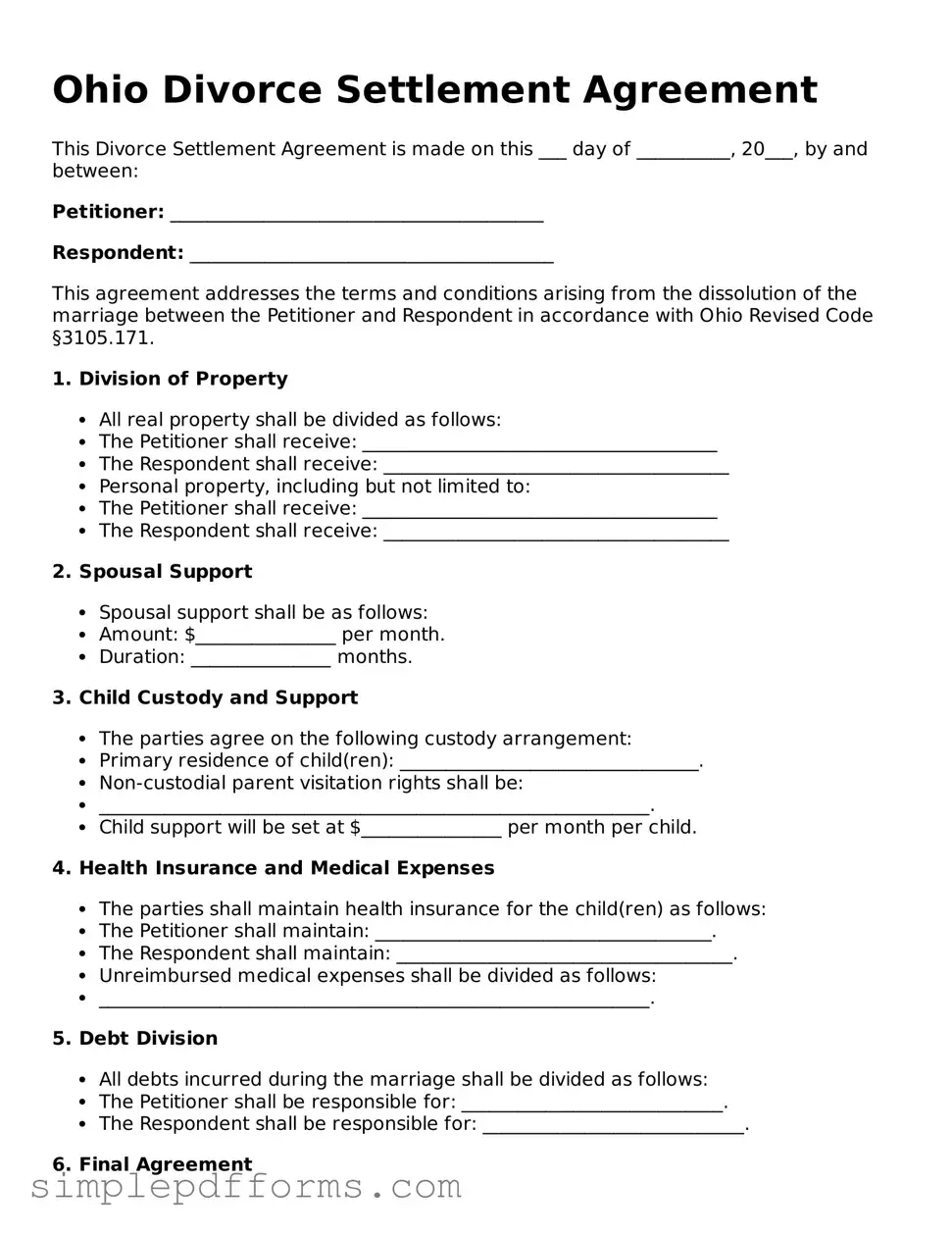Ohio Divorce Settlement Agreement
This Divorce Settlement Agreement is made on this ___ day of __________, 20___, by and between:
Petitioner: ________________________________________
Respondent: _______________________________________
This agreement addresses the terms and conditions arising from the dissolution of the marriage between the Petitioner and Respondent in accordance with Ohio Revised Code §3105.171.
1. Division of Property
- All real property shall be divided as follows:
- The Petitioner shall receive: ______________________________________
- The Respondent shall receive: _____________________________________
- Personal property, including but not limited to:
- The Petitioner shall receive: ______________________________________
- The Respondent shall receive: _____________________________________
2. Spousal Support
- Spousal support shall be as follows:
- Amount: $_______________ per month.
- Duration: _______________ months.
3. Child Custody and Support
- The parties agree on the following custody arrangement:
- Primary residence of child(ren): ________________________________.
- Non-custodial parent visitation rights shall be:
- ___________________________________________________________.
- Child support will be set at $_______________ per month per child.
4. Health Insurance and Medical Expenses
- The parties shall maintain health insurance for the child(ren) as follows:
- The Petitioner shall maintain: ____________________________________.
- The Respondent shall maintain: ____________________________________.
- Unreimbursed medical expenses shall be divided as follows:
- ___________________________________________________________.
5. Debt Division
- All debts incurred during the marriage shall be divided as follows:
- The Petitioner shall be responsible for: ____________________________.
- The Respondent shall be responsible for: ____________________________.
6. Final Agreement
This agreement represents the complete understanding of the parties. Any modifications must be made in writing and signed by both parties.
Signatures
Petitioner: _________________________________ Date: _________________
Respondent: ________________________________ Date: _________________
Witness: ___________________________________ Date: _________________
Notary Public: _____________________________ Date: _________________
This form is intended to create a legally binding agreement and should be reviewed by a legal professional to ensure compliance with Ohio state laws.
